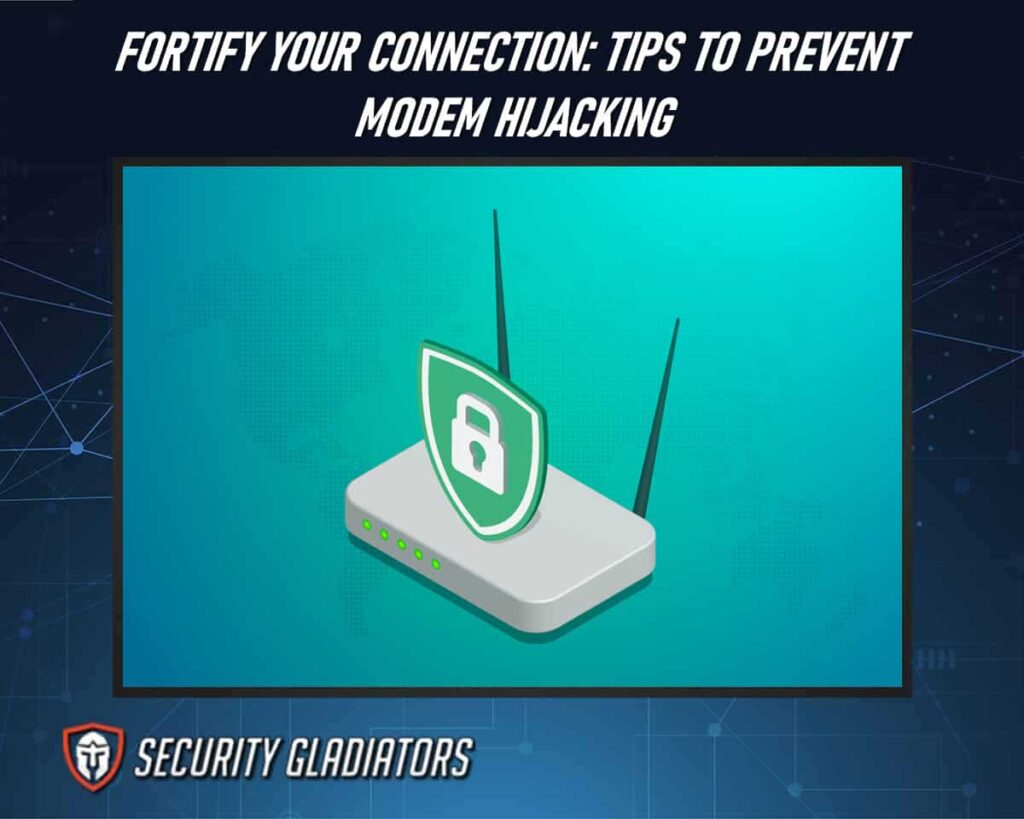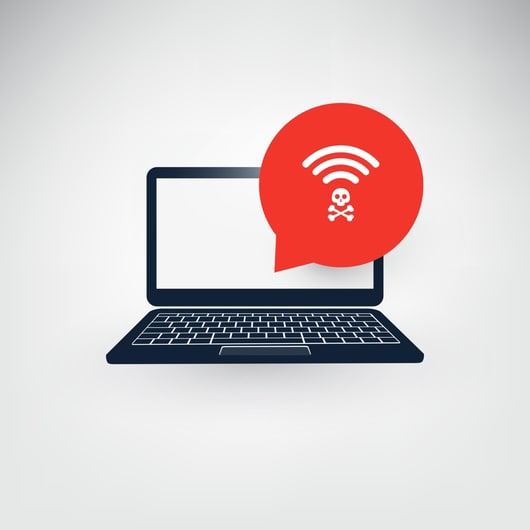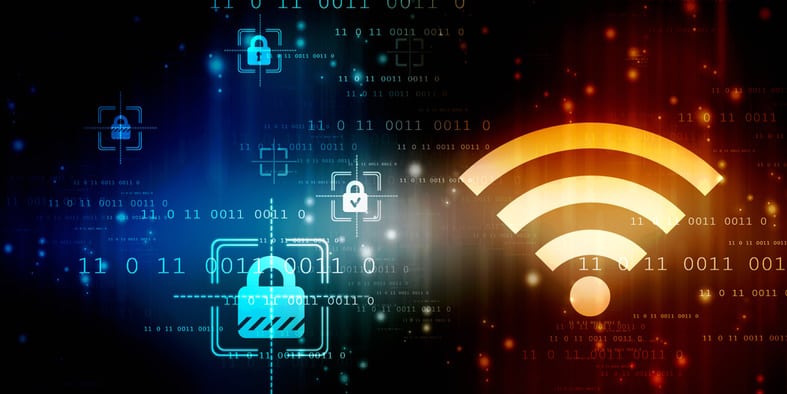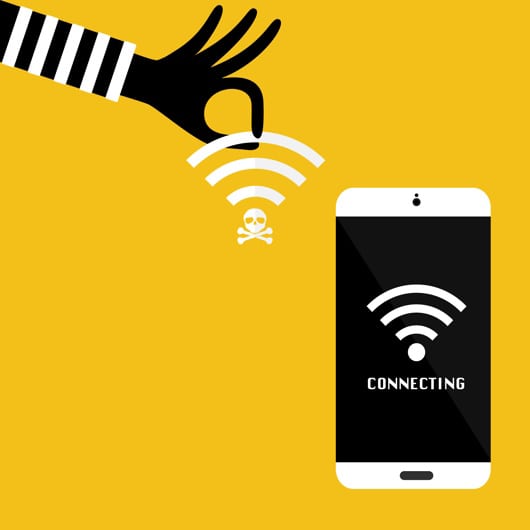
Table of Contents
What Is Modem Hijacking?
Modem hijacking, also known as router hijacking, is a malicious practice where cybercriminals gain unauthorized access to a user’s modem or router, effectively taking control of their internet connection. Once compromised, the hijackers can manipulate the device’s settings, redirect internet traffic, and even monitor online activities. This intrusion allows them to potentially intercept sensitive data, inject malware into web traffic, or exploit vulnerabilities in connected devices, posing significant threats to the user’s online security and privacy. Modem hijacking is a serious cybersecurity issue that can lead to various detrimental consequences if not effectively prevented and mitigated.
Signs of a Hijacked Modem
Here are some signs of a router hack:
Unexpected Network Activity
If you notice unusual or excessive network activity, such as data transfers, even when your devices are not actively in use, it could be a sign of unauthorized access.
Slow Internet Speeds
A compromised modem can lead to reduced internet speeds as the attacker may be consuming your bandwidth for their own purposes.
Unwanted Network Intrusions
You might notice unfamiliar devices connected to your network, or unauthorized access attempts, such as failed login attempts in your modem’s log.
Changes to Network Settings
If your network settings, such as Wi-Fi name (SSID) or password, have been altered without your knowledge or consent, it’s a clear sign of tampering.
Frequent Network Disruptions
Frequent disconnects or intermittent network issues could be the result of an attacker interfering with your modem’s operation.
Inability to Access the Modem Interface
If you can no longer access your modem’s web interface using the default login credentials, or if those credentials have changed, it’s a strong indication that someone has compromised your modem.
Unusual or Unauthorized Devices
Check the list of devices connected to your network. If you see unfamiliar devices or devices you didn’t authorize, they may be connected by an attacker.
Suspicious Traffic
Monitor your network traffic for any suspicious or unexpected communication between your devices and external servers or devices.
Increased Data Usage
A compromised modem may lead to increased data usage as attackers use your connection for their own purposes, such as hosting malicious services or carrying out attacks. If you notice this, there is a likelihood that a hacker has installed malware onto your computer.
How To Prevent Modem Hijacking
Preventing modem hijacking is crucial for maintaining your online security. Here are some essential steps to help you safeguard your modem and protect your internet connection:
Keep Your Modem’s Firmware Up to Date
One effective strategy for safeguarding your modem from hijacking is ensuring that the firmware of your device remains up to date at all times. Keeping your modem’s firmware up to date is crucial in preventing modem hijacking as outdated firmware often contains security vulnerabilities that can be exploited by hackers. By regularly updating the firmware, you can fix any existing security issues and ensure that your router is equipped with the latest security patches. To update your modem’s firmware, you should first check for updates on the manufacturer’s website or through the router settings interface.

Change the Default Login Credentials
Changing the default login credentials is crucial in preventing unauthorized access to your modem and protecting it from router hacking or modem hijacking attempts. By using unique and strong passwords, you can significantly reduce the risk of someone gaining control over your modem. Additionally, it is recommended to avoid using common or easily guessable passwords to ensure maximum security.
This is important:
Another important step is to regularly update your login credentials, ensuring that they remain secure against any potential threats. Moreover, it is essential to use security software that can help detect and prevent unauthorized access attempts. This software can provide an additional layer of protection by detecting suspicious activities and blocking potential threats in real time. Lastly, consider setting up a separate network for guest devices instead of allowing them access through the main network with default credentials. This way, you can maintain better control over who has access to your network and minimize the chances of unauthorized users gaining entry into your modem system.Enable Strong Passwords and Two-Factor Authentication
Enabling strong passwords and implementing two-factor authentication can significantly enhance the security of your modem system, ensuring that only authorized users have access to it. By choosing a strong password consisting of a combination of uppercase and lowercase letters, numbers, and special characters, you can create a robust defense against potential hackers.
Additionally, enabling two-factor authentication adds an extra layer of security by requiring users to provide a second form of identification, such as a unique code sent to their mobile device, in addition to their username and password. This helps prevent unauthorized access even if someone manages to obtain the login credentials. It is important to note that changing the default username and password provided by the manufacturer is essential since these are often easily guessable or widely known among hackers. Furthermore, regularly updating your router’s admin settings and frequently changing your router password further strengthens the security measures in place. In the event that your modem has been compromised or you suspect unauthorized access, performing a factory reset can help revert any malicious changes made by hackers back to the original settings.
Disable Remote Management and Access
Remote management and access allow users to control their modem system from a different location, which can be convenient but also opens up opportunities for malicious activities. By disabling remote management and access, you effectively prevent unauthorized individuals from gaining control over your modem. This is crucial in preventing router hacks and ensuring the security of your network. When remote management is enabled, hackers can exploit vulnerabilities in the system to gain unauthorized access and potentially compromise sensitive information. Disabling this feature eliminates that risk entirely.
Moreover, disabling remote access helps safeguard against common signs of router hacking. For instance, if you notice changes in your network settings without any action on your part or experience slow internet speeds despite having a fast connection, it could indicate that someone has gained unauthorized access to your router through remote means. By disabling remote management and access, you minimize these risks and protect yourself from potential cyber threats.
Note:
It is important to note that not all routers have this feature enabled by default; however, it is still advisable to double-check its status as some manufacturers might have activated it during updates or firmware installations without user knowledge. Additionally, regularly updating your router’s firmware ensures that any known vulnerabilities are patched promptly.Use a Firewall to Block Unauthorized Access
Implementing a firewall provides an essential layer of protection against unauthorized access, instilling a sense of security and peace of mind for users. A firewall acts as a barrier between the internal network and the external world, monitoring and controlling incoming and outgoing traffic based on predetermined rules. By configuring the firewall to block unauthorized access attempts, users can prevent modem hijacking and potential breaches of their network security. Firewalls inspect packets of data, checking their source and destination addresses, as well as their content, to ensure that only legitimate traffic is allowed to pass through. This helps in preventing malicious actors from gaining unauthorized access to the modem or any connected devices within the network. Additionally, firewalls can be set up to log all connection attempts, providing valuable information that can aid in identifying and mitigating potential threats.
Regularly Monitor Your Network Activity
By vigilantly observing the data flowing through your network connection, you can identify any unusual or suspicious behavior that may indicate an attempted intrusion or compromise. This proactive approach allows you to promptly respond and take necessary actions to safeguard your modem from potential threats. Monitoring network activity involves analyzing traffic patterns, examining logs, and scrutinizing router settings for any abnormalities or signs of malicious activity. Also, checking the router’s DNS settings to make sure they have not been altered can help prevent potential hijacking. Through this meticulous observation, you can detect unauthorized access attempts, unusual data transfers, or any unexpected changes in network configurations that could potentially lead to modem hijacking incidents.
Secure Your Wi-Fi Network
Securing your Wi-Fi network is essential for protecting against unauthorized access and potential security breaches. By implementing the necessary measures, you can ensure that only authorized individuals have access to your internet connection and prevent any potential threats from compromising your personal data.

One of the first steps in securing your Wi-Fi network is to change the default administrator username and password on your wireless router. This helps prevent attackers from easily accessing your network settings and making unauthorized changes. Additionally, enabling encryption protocols such as WPA2 or WPA3 ensures that your wireless network traffic is encrypted, making it more difficult for attackers to intercept and decipher any information being transmitted. It is also important to regularly update the firmware on your router, as manufacturers often release updates that address security vulnerabilities.
Moreover, consider changing the SSID, which is an acronym for Service Set Identifier, essentially representing your Wi-Fi network’s name in simple terms. New routers typically include the router’s brand in the SSID, and malicious individuals can exploit this to aid them in password cracking. Instead, opt for a personalized network name to conceal the router’s type, preventing hackers from gaining such insights. Remember, the fewer hints you provide to potential hackers, the more challenging you make their task.
Furthermore, disabling remote administration and changing the default Service Set Identifier (SSID) can help reduce the visibility of your network to potential attackers. Lastly, configuring advanced security features such as MAC address filtering or setting up a guest network can provide an additional layer of protection for your Wi-Fi network.
Use a Virtual Private Network (VPN) for Added Security
A virtual private network creates a secure connection between your device and the internet by encrypting the data that is transmitted over the network. This encryption ensures that even if someone manages to intercept your data, they won’t be able to decipher it without the encryption key. By using a VPN, you can prevent modem hijacking as it adds an extra layer of security to your internet connection. It masks your IP address, making it difficult for hackers to track your online activities or gain access to sensitive information. Additionally, a VPN allows you to browse the internet anonymously, further protecting your privacy.
Be Cautious of Suspicious Emails and Links
When dealing with emails and links, it is important to exercise caution and be mindful of any suspicious content that may pose a threat to the security of your personal information. Cybercriminals often use email as a means to install malware to gain access to sensitive data. Therefore, it is crucial to be cautious of suspicious emails and links that arrive in your inbox. This includes being wary of unexpected emails from unknown senders, especially if they contain attachments or request personal information. It is advisable not to click on any suspicious links embedded within these emails, as they may lead you to malicious websites designed to steal your data or install harmful software on your device.
Regularly Update and Patch Your Devices and Software
Regularly updating and patching devices and software is essential for maintaining the security of your personal information and protecting against potential vulnerabilities. By regularly updating your devices, such as computers, smartphones, and routers, you ensure that any known security flaws are addressed through patches provided by manufacturers. These updates often include bug fixes, security enhancements, and improvements to overall system stability.
Create Guest Wi-Fi network
Having a guest Wi-Fi network is crucial as it safeguards your primary network from potential security risks. It provides a dedicated space for guests to access the internet without having access to their personal devices or sensitive data. This segregation enhances network security and privacy, ensuring a safer online experience for both you and your guests.
Consequences of Modem Hijacking
Here are ten potential consequences of modem hijacking:
Loss of Internet Access
The most immediate and noticeable consequence of modem hijacking is the loss of internet connectivity. Attackers can disrupt or completely cut off internet services, causing inconvenience and disruptions for users.
Data Theft
Modem hijackers can intercept sensitive data, such as login credentials, personal information, or financial details, as it passes through the compromised modem. This can lead to identity theft and financial loss.

Man-In-The-Middle Attacks
Hijacked modems can be used to execute man-in-the-middle attacks, where attackers intercept and manipulate data traffic between a user and a website or online service, potentially leading to further data compromise.
Distributed Denial of Service (DDoS) Attacks
Hijacked modems can be harnessed to launch DDoS attacks against other targets, overwhelming their servers and causing service disruptions.
Infection of Connected Devices
Modem hijackers can propagate malware to devices connected to the local network, including computers, smartphones, and IoT devices, compromising their security and potentially turning them into bots for further attacks.
Privacy Invasion
Attackers can gain access to cameras and microphones on devices connected to the network, invading the privacy of users. This can lead to surveillance, eavesdropping, or even blackmail.
Botnet Recruitment
Hijacked modems can be used to recruit devices into a botnet, creating a network of compromised devices that can be exploited for various malicious activities, including more extensive cyberattacks.
Stolen Bandwidth
Modem hijackers can use the hijacked modem’s bandwidth for their own purposes, such as hosting illegal websites, sharing copyrighted content, or distributing malicious software.
Financial Loss
Businesses that rely on uninterrupted internet access can suffer significant financial losses due to downtime caused by modem hijacking. Loss of customer trust and business reputation may also result from security breaches.
Legal Consequences
Modem hijacking is illegal and can lead to severe legal consequences for the perpetrators if caught. Law enforcement agencies may investigate, leading to arrests and prosecutions.
Frequently Asked Questions
Why Is Preventing Modem Hijacking Important?
Preventing modem hijacking is crucial to safeguard your network and data. Modem hijackers can cause significant harm by exploiting your internet connection and potentially gaining access to sensitive information. Protecting your modem helps maintain network integrity and personal security.
How Can I Change My Modem’s Default Password?
To change your modem’s default password, access the modem’s web interface through a browser, typically using an IP address like 192.168.0.1. Log in with the default credentials, then navigate to the password settings. Choose a strong, unique password to replace the default one to prevent unauthorized access.
How Can I Fix a Hacked Router?
To address a hacked router, start by changing the login credentials, installing firmware updates, and enabling strong encryption. After that, ensure all devices connected to your network have secure passwords and monitor network activity for any anomalies. If the situation remains unresolved, consider seeking professional assistance or performing a factory reset as a last resort.
How Can I Regularly Check Connected Devices to My Modem?
Access your modem’s web interface and review the list of connected devices. Ensure they are all familiar and authorized. If you spot any unfamiliar or unauthorized devices, take immediate action to disconnect them and change your Wi-Fi password to prevent future breaches. Regular monitoring is essential for security.
Is It Safe To Use Public Wi-Fi Networks With My Modem?
It’s generally not safe to use public Wi-Fi networks with your modem. They are often less secure, so it’s advisable to use a VPN for added security.
Conclusion
Safeguarding your modem is essential to protect your online security and privacy. Modem hijacking can have serious consequences, including identity theft and unauthorized access to your network. By following the tips mentioned above, such as changing default passwords, enabling strong encryption, and keeping your firmware up-to-date, you can significantly reduce the risk of modem hijacking. In some cases, you might be forced to factory reset your device. You will need to find the device’s reset button to format the device. Remember that a multi-layered approach to security is the most effective. Make sure you stay vigilant, stay informed, and take proactive measures to ensure your modem remains a fortress against unauthorized access. By doing so, you can enjoy a safer and more secure online experience for you and your family.

